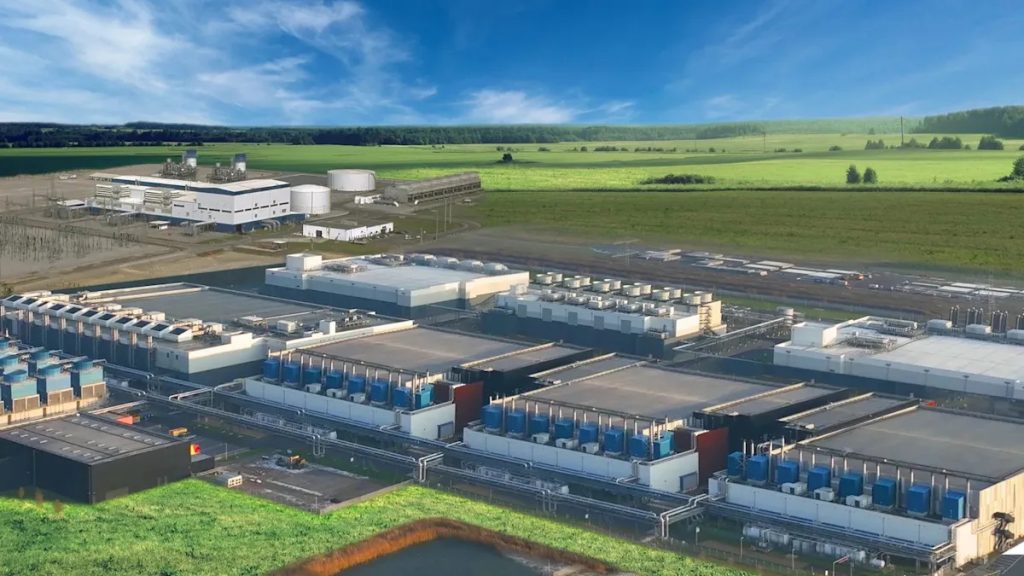This story was originally published on Utility Dive. To receive daily news and insights, subscribe to our free daily Utility Dive newsletter.
Dive Brief:
Data centers with the capability to shift workloads to different times can avoid stressing the electric grid and save consumers money — but the shifts may increase power plant emissions in some markets, according to new research from the MIT Future Energy Systems Center.
Data center load shifting can facilitate both renewable energy integration and improvements in the utilization of existing baseload capacity, researchers concluded. “As a result, the emissions impact depends on which effect dominates,” they wrote. “Our findings highlight the importance of aligning data center flexibility with renewable deployment and regional conditions.”
Projections of data center electricity demand growth have utilities and grid operators looking for resources and demand management strategies to accommodate the new loads. AI data centers could consume 34 GW, or about 3% of the United States’ generating capacity by 2030, Schneider Electric said earlier this year. Other predictions for data center growth are much higher.
Dive Insight:
Experts say not all proposed data centers will be built, meaning estimates for future power demand are uncertain. But they also agree that significant demand growth is in the wings, and flexible load profiles can ease potential grid stress.
A 2024 RAND Corporation forecast sees 130 GW of data center demand in the United States by 2030. The U.S. Department of Energy this month estimated an additional 100 GW of new peak capacity is needed by 2030 for data centers.
“Data centers are among the fastest-growing electricity consumers,” Christopher Knittel, MIT’s associate dean for climate and sustainability, said in a statement. “Our report underscores the urgency of rethinking grid management and [of] operating data centers more flexibly – especially when it comes to AI training.”
Data centers do not operate consistently at full capacity and typically maintain utilization rates around 80%, according to the paper, “Flexible Data Centers and the Grid: Lower Costs, Higher Emissions?”
The 20% of “headroom” means data centers can accommodate shifting loads to times when renewable energy is plentiful or power prices are low.
“This may not only save operating costs for data centers, but also provide flexibility and increase reliability for the power system while also meeting climate goals,” MIT researchers said.
The team modeled flexible data center demand in three U.S. power markets: the Mid-Atlantic, Texas, and the Western Electricity Coordinating Council, which operates across 14 states and parts of Canada and Mexico. Across the three regions, data center flexibility lowered total system costs by an average of 3.7%, they said.
“The potential grid crisis poised by data centers could become an opportunity — if only policymakers act swiftly to incentivize or require flexible data center operations, such as dynamic pricing, demand response programs, or performance-based incentives tied to load-shifting capabilities,” Knittel said.
In power markets with more renewable resources and limited coal capacity, data center flexibility tends to result in greater renewable penetration and emissions reductions, according to the report. In Texas, where wind and solar energy are booming, emissions fell by up to 40% in the team’s modeling.
Those results did not repeat in areas with higher coal and gas utilization, however.
“In the Mid-Atlantic and WECC, the support for baseload is stronger,” according to the report. “This reduces the need for flexible natural gas capacity as coal generation becomes more economically viable.”
With data centers utilizing their full flexibility, MIT’s paper found that average hourly coal utilization in the Mid-Atlantic rises from 50% to 59%.
“The emissions impact of data center flexibility is thus not inherent to flexibility itself, but rather depends on the surrounding resource mix and investment environment,” researchers concluded.
Recommended Reading

